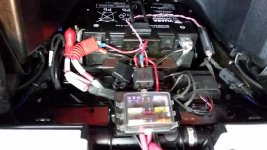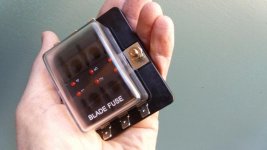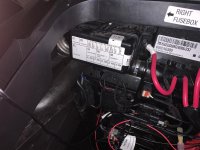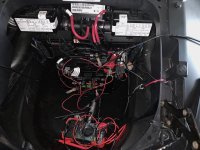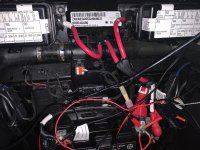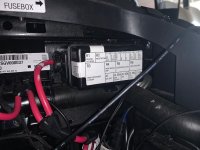nealperkins
Member
First, I am a complete electrical noob, that's important information!
I have a pair of driving lights (fender mount) that worked just great for 3 years or so, connected to a rheostat on the side cover. A minor irritation was that I wired it such that the lights did not switch off with the ignition.
But, it happened that the lights began to flicker and come on w/o the bike being on. Hmm, battery issues.
So, I removed 'a' black wire in order to terminate the connection (and unknowingly disconnected the less on the bike's nose). I am not finally ready to repair this bike.
But, I'm still a noob.
Like you, I've got a few more farkles than I need. So, under the trunk looked a bit like a bird's nest. No joy.
I have detangled and separated most of the wires such that I have a clue what's going where.
My problem now seems to be that I cannot locate a wire/circuit that is switched. (Again, I don't know where all the 'add-on' wires are going.)
I have a volt meter.
So, what is my EASY solution?
Thank you for helping!
I have a pair of driving lights (fender mount) that worked just great for 3 years or so, connected to a rheostat on the side cover. A minor irritation was that I wired it such that the lights did not switch off with the ignition.
But, it happened that the lights began to flicker and come on w/o the bike being on. Hmm, battery issues.
So, I removed 'a' black wire in order to terminate the connection (and unknowingly disconnected the less on the bike's nose). I am not finally ready to repair this bike.
But, I'm still a noob.
Like you, I've got a few more farkles than I need. So, under the trunk looked a bit like a bird's nest. No joy.
I have detangled and separated most of the wires such that I have a clue what's going where.
My problem now seems to be that I cannot locate a wire/circuit that is switched. (Again, I don't know where all the 'add-on' wires are going.)
I have a volt meter.
So, what is my EASY solution?
Thank you for helping!

